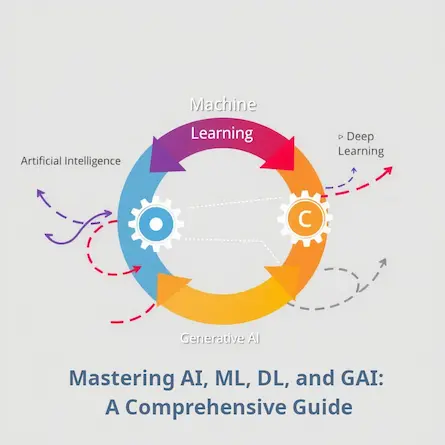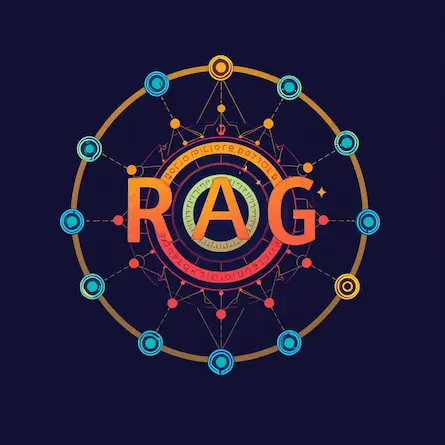
Advanced Setup: Integrating Qwen-2-7B with LangChain for LLM-Augmented Writers
- Ctrl Man
- Artificial Intelligence , Writing
- 17 Sep, 2024
Advanced Setup: Integrating Qwen-2-7B with LangChain for LLM-Augmented Writers
Introduction to Large Language Models (LLMs) and Memory Management in Writing
In the digital age of content creation, large language models (LLMs), such as Qwen-2-7B developed by Alibaba, have revolutionized how writers approach their craft. These powerful AI systems not only help generate coherent text but also maintain narrative continuity across extended works like novels or serial stories. A key aspect to optimizing this integration is effective memory management, which ensures that the AI retains information about characters, plot developments, and context from previous sessions.
Qwen-2-7B Overview
Qwen-2-7B, with its 7 billion parameter architecture, strikes a balance between computational efficiency and high performance. It’s designed to generate human-like text that can be used for various creative writing tasks, making it an ideal companion for authors looking to augment their productivity without overwhelming hardware resources.
LangChain: A Flexible Framework for LLM Integration
LangChain is an innovative framework that simplifies the integration of large language models into workflows. It’s designed with flexibility and scalability in mind, allowing writers to customize interactions with AI models based on their specific needs. By leveraging LangChain, users can manage memory, ensure consistency across chapters or sessions, and even automate certain aspects of text generation.
Setting Up Qwen-2-7B for Use with LangChain
Model Setup:
To begin integrating Qwen-2-7B into your workflow using LangChain, you’ll need to have both the model and its tokenizer properly installed on your system. This involves fetching the pre-trained models from Hugging Face’s model hub:
from transformers import AutoModelForCausalLM, AutoTokenizer
tokenizer = AutoTokenizer.from_pretrained("Qwen/Qwen-2-7B")
model = AutoModelForCausalLM.from_pretrained("Qwen/Qwen-2-7B")
Wrapping Qwen-2-7B with LangChain for Enhanced Functionality
Once the model is set up, you can leverage LangChain to enhance its capabilities. Specifically, integrating LangChain with your Qwen-2-7B model through the Hugging Face pipeline allows for more sophisticated handling of interactions and data:
from langchain import HuggingFacePipeline
from transformers import pipeline
# Load the model and tokenizer
qwen_pipeline = pipeline("text-generation", model=model, tokenizer=tokenizer)
# Initialize LangChain's LLM wrapper
qwen_llm = HuggingFacePipeline(pipeline=qwen_pipeline)
Incorporating Memory Management with LangChain
LangChain’s memory features are crucial for maintaining the continuity of narratives across chapters or sessions. By wrapping your Qwen-2-7B model inside a ConversationChain with an appropriate memory component, you can ensure that previous interactions influence future outputs:
from langchain.memory import ConversationBufferMemory
from langchain.chains import ConversationChain
# Create memory for storing past conversation context
memory = ConversationBufferMemory()
# Create a chain that uses the model and memory
conversation = ConversationChain(llm=qwen_llm, memory=memory)
# Example of generating text with memory
output = conversation.run("Write the first paragraph of Chapter 1.")
Customizing Qwen-2-7B for Advanced Writing Tasks
To fully leverage Qwen-2-7B in a writing workflow, it’s essential to tailor its interaction with LangChain to fit your specific narrative needs. This might involve expanding memory structures to store summaries and characters’ development across chapters:
Managing Chapter-Specific Memory
By enhancing the basic ConversationBufferMemory with custom components that track chapter summaries or character progressions, you can create a more nuanced understanding of your story’s evolution within Qwen-2-7B. This is particularly beneficial for maintaining thematic consistency, subplot developments, and pacing across an extended work.
Optimization Techniques
- Session Continuity: Implementing session-specific memories can help maintain context when restarting or revisiting a writing project.
- Character Development Tracking: Incorporating character profiles within the memory system ensures that Qwen-2-7B retains information about each character’s motivations, background, and interactions across chapters.
- Creative Guidance: Setting up prompts or guidelines for AI responses based on memory inputs can help steer the narrative in desired directions.
Performance Considerations
As you integrate Qwen-2-7B with LangChain, pay attention to the computational resources required. Efficiently managing model requests, optimizing language generation pipelines, and leveraging asynchronous processing capabilities when available can enhance performance without compromising on output quality.
Conclusion: Qwen-2-7B and LangChain for LLM-Augmented Writing
The combination of Qwen-2-7B with LangChain provides a robust framework for advanced writing tasks that require both creative inspiration and structured narrative continuity. By customizing the integration to fit individual project needs, writers can harness the power of AI to augment their creativity, streamline their workflow, and produce high-quality content efficiently. As you embark on this journey, remember to balance automation with human oversight, ensuring that your narrative remains authentic and resonant with readers.
This article serves as a guide for those looking to optimize their writing processes by integrating advanced large language models like Qwen-2-7B into their workflow through LangChain. Through careful setup and customization, writers can harness the potential of AI to enhance productivity and storytelling quality without sacrificing creative control or narrative integrity.




